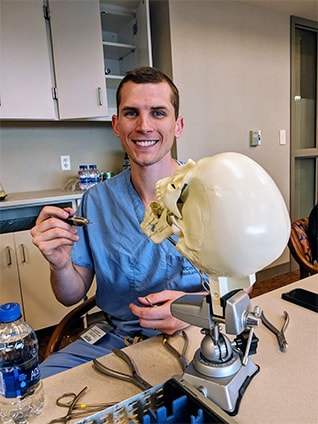Didactic Conferences
 The Plastic Surgery Residency educational curriculum includes clinical case conferences, lectures, journal clubs, a visiting professor program, Mayo Clinic Continuing Medical Education courses, AO courses, cadaver labs, and procedural skills training.
The Plastic Surgery Residency educational curriculum includes clinical case conferences, lectures, journal clubs, a visiting professor program, Mayo Clinic Continuing Medical Education courses, AO courses, cadaver labs, and procedural skills training.
A robust weekly conference schedule covers the scope of plastic surgery over the course of your training.
Plastic Surgery Grand Rounds
The Division of Plastic Surgery meets every Monday morning for Grand Rounds:
- Morbidity and Mortality and Surgical Quality Conference (once per month)
- Plastic Surgery Case Conference (twice per month)
- Craniofacial Trauma/Hand Trauma Conference (once per month)
Plastic Surgery Core Conference
The program provides protected education time for PGY-2 through PGY-6 plastic surgery residents every week for a faculty-led, topic-based didactic conference with a designated reading list:
- Basic science review
- Oral board case discussions
- Faculty lecture
- In-service exam question review
Plastic Surgery Journal Club
Journal Club is held every six weeks. It takes the format of an informal dinner at a local restaurant with topic-based discussions of contemporary articles from major plastic surgery journals.
Plastic Surgery Junior Resident Conference and Skills Curriculum
Two procedural skills labs are available and accessible by all residents.
PGY-1 and PGY-2 residents have protected education time for faculty-led, skills-based workshops. This conference is specifically structured for junior plastic surgery residents and focuses on acquiring clinical and technical skills relevant to plastic surgery at an early stage. This allows small group teaching of some of the fundamental principles of plastic surgery, including:
- Clinical examination skills
- Interpretation of clinical imaging
- Suturing workshops
- Microsurgical training (models and live rodent training)
- Anatomy (cadaver dissection)
- Principles of hand surgery (radiographs, splinting, fixation techniques)
- Principles of facial trauma (sawbones, MMF, fracture fixation, facial lacerations)